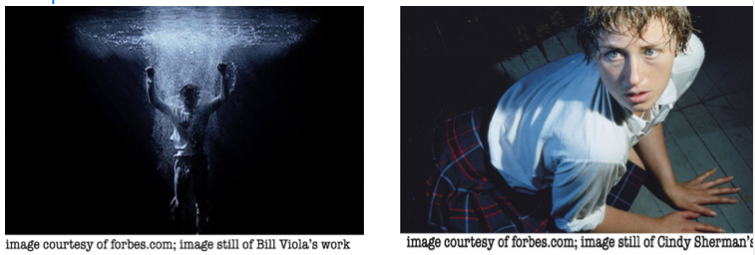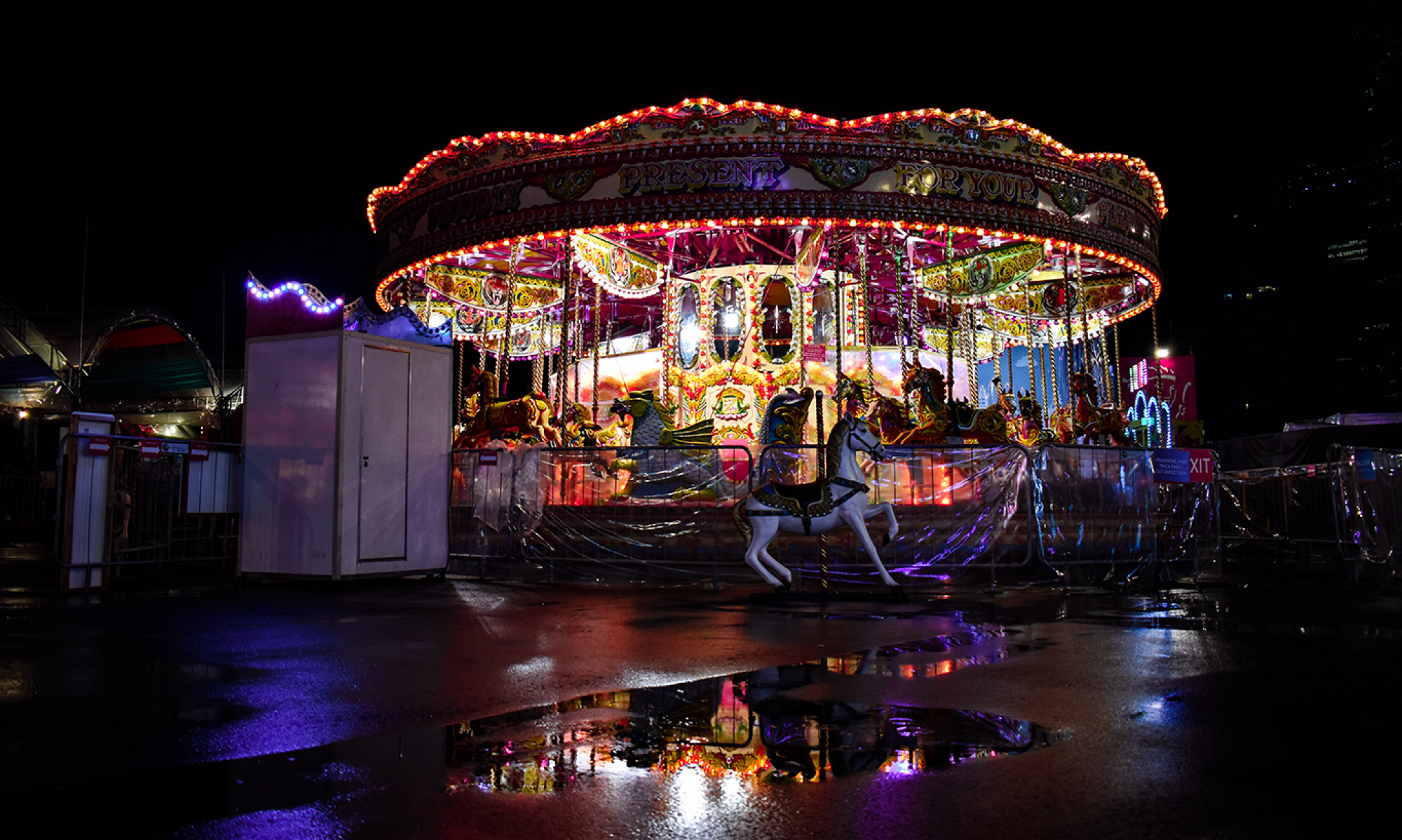Identities in Interactive Media
Contemporary art has become a confusing cauldron of culture and movements, a miscellaneous mash-up of many themes and methodology. Aspiring artists would definitely be distraught in attempts of finding their identity within the art world. Ascending from social realism by Gustave Courbet to neo-conceptual statements by Jeff Koons, artists will have to reach into their background and culture to spearhead their unique brand of introspection to the public. In the discussion of the term “contemporary”, this essay will limit its effects to “artworks that address issues that relate to the artist at the present time and space, irregardless of dead or alive”. A significant game changer in the art world would be the offshoot of new media art blazed by the birth of the Internet and new technologies, side step from the initial spark of neo-conceptualism by Duchamp in the 1920s, which will be further explained. With the ignition of the tech-race with open source application and gadgets, artists are able to parallel their own narratives with the help of the said technology. Within the huge population of artists and wide spectrum of categories around the world, there lies Mona Hatoum, a contemporary artist who speaks of contemporary issues . In this essay, we will highlight how Hatoum finds her identity within an ever-changing and connected tech-world, as well as how her art pieces project these issues, in relations to her contemporaries.
Hatoum’s spot in history
As mentioned earlier, Duchamp defied the conventions of art the day he was denied the privileges as a Cubist painter. He was left without any status on the quagmire interlinked between Cubism, Futurism and Abstract., and with that, he created Conceptualism, sparking the timeline of conceptual art-making. Flying through half a century later, Neo-Conceptualism evolved from the aforementioned predecessor, formed from various factors like shock tactic, openness to material, contemporary culture and entrepreneurial marketing. Neo-Conceptualism began as the Young British Artists (YBA) gathered to create new, innovative works. The YBA was not an arbitrary term, instead it was a successful economic label. They utilised contemporary culture to create a sensationalised “packaging” that art aficionados would buy into, creating a snowball effect of their artworks. Pushed a little further with more technical aspects of technological utilisation, we have net art and glitch art. This form of art movement challenges the boundary between art and technology, treading towards the line of technical functions. This meant the technology they use are more based on codes and algorithms instead of the utilitarian functions the neo-conceptualists use. Despite the differences in visual qualities or technical details, these art forms are all part of the bigger spectrum of interactive media. In definition, interactive media creates an immersing condition that speaks to the audience of its narrative, through hypermedia with sound and video. Within that spectrum, Hatoum falls in the season of the neo-conceptualists, subtracting the entrepreneurial aggressiveness the YBA had.

Hatoum as an individual
Hatoum was born in Lebanon in the midst of the civil war. She was forced into exile as a result of that, leaving her family behind. (Oliver, 2018) This narrative never left her as an artist as she became obsessed with the theme of ordeal and danger, with suspense permeating through her works. She became known for her performance and video art, especially on topics like war and life, feminist identity and vulnerability of humankind, all in the perspective of a Middle Eastern woman. These themes are carried through into her artworks in various ways, amplified by the traits of interactive media: interactivity, immersion and hypermedia.

Corps estranger
https://fourthree.boilerroom.tv/film/mona-hatoum-corps-etranger-1994.
In her work, “Corps etranger” 1994, she created an installation that focuses on the polarity of physical privacy to emotional voyuerism through sound and sight. When entering the 10 feet high cylindrical structure shown above, the audience would hear the amplified sound of Hatoum’s recorded heart beat and stomach rumbling, immersed into the sound and video within the surroundings. When they look down, they would see a circular video screen showing a morbid process of endoscopy and colonoscopy, the process of pushing a tiny video camera through the digestive tract for medical purposes. With this process, the audience is physically pushed through the digestive tract of Hatoum. It is an entirely private process that is physically sacred, limited to the eyes of Hatoum and her doctor. However, in this artwork, Hatoum’s body is on full display without any limitations. From the mouth to the the mucous membranes in her body, and some orifices, are all enlarged and put on display as if it was a conventional screening or a public surveillance. (Emma, 2018)

Hatoum, Interactive Media and her Contemporaries
The idea of physical privacy and emotional voyeurism comes in when the audience are inspecting Hatoum’s body on such a biological standpoint, almost micro-focused on her identity as a human/female organism. (YUB, 2018) In modern society where females are placed on the scrutiny of the male gaze, the technology used by her allows that male gaze to be amplified on such a voyeuristic-public level. (Dickson, 2010) This is only achievable with the modern technology of the endoscopic-camera. In the voyeuristic aspect, she places her own body under the scrutiny of the public, something private and usually information no one really cares about. Hatoums body is almost seen as a journey of flesh, removing the sexual connotations often associated with exhibiting your own body. The rapid plug of the endoscopic camera into her body was seen as a metaphor for rape as the view scanned through Hatoum’s anus and vagina. Abjective immersion is enhanced when the visceral motion and perspective of standing on the circular video projection tricks audience into taking the position of the endoscopic-camera. (Dickson, 2010) AbAlternatively, she compares the idea of natural biology to religious spiritualism. This is brought about by the grandeur technology used in the series, seen in the almost temple-like structure of the installation. The audience would feel a sense of vertigo when they lower their head, heightened by a degree of magnification and claustrophobic space, they question the presence of an almighty entity that overlooks this space, contrasted with the proven biology seen on screen. (Baumgartner, 2018) This can be seen in many of her contemporaries, such as Bill Viola and Cindy Sherman. Bill Viola utilises large panels of screen that juxtaposes religious icons with hypermedia effects of slow motion and amplified sound (Y-Jean, 2015), pushing audience into a almost-hyperrealistic bible. Cindy Sherman, on the other hand, utilises photography of her own body (like Hatoum) to criticise how the male gaze is forcefully and psychologically placed on the female population. In summary, Hatoum utilises the effects of immersion through hypermedia, questioning the audience of multiple themes, including psychological, biological and even spiritual logic.

In conclusion, Mona Hatoum finds the capacity to seek out her own identity as well as speaking up on her own narrative of national loyalty, feminist mission and human condition. These are only capable through the usage of new media, utilising hypermedia and immersion to draw the audience into her own space. Hence, this results in a unique point that separates her from her contemporaries who might be addressing the same issues, albeit different contexts. Hatoum has the ability to create a sensational artwork that builds on phenomena, using structural and physical quality of her installations to create awareness by her audience.The videos also generates immersion with strangely familiar sound and sight, making audience care. This is the future of interactive media as it joins in with relational art to create a more positive world view.
Bibiliography:
Video
“Artist’s Internal Organs and Fluids on Vivid Display in Video Corps Étranger.” 4:3. Accessed October 23, 2018. https://fourthree.boilerroom.tv/film/mona-hatoum-corps-etranger-1994.
Contextual
“Mona Hatoum.” Fondation Louis Vuitton. Accessed October 23, 2018. https://www.fondationlouisvuitton.fr/en/the-collection/artists/mona-hatoum.html.
Cube, White. “Artists – Mona Hatoum.” White Cube. Accessed October 23, 2018. http://whitecube.com/artists/artist/mona_hatoum/.
Guggenheim. Accessed October 23, 2018. https://www.guggenheim.org/artwork/artist/mona-hatoum.
“National Galleries of Scotland.” Mona Hatoum | National Galleries of Scotland. Accessed October 23, 2018. https://www.nationalgalleries.org/art-and-artists/artists/mona-hatoum.
“About Cindy Sherman – Moderna Museet I Stockholm.” Moderna Museet I Stockholm. Accessed October 23, 2018. https://www.modernamuseet.se/stockholm/en/exhibitions/cindy-sherman/about-cindy-sherman/.
Biblio Evidence
Frédérique Baumgartner. Mona Hatoum / Corps Tranger. Accessed October 23, 2018. http://www.newmedia-art.org/cgi-bin/show-oeu.asp?ID=150000000007761&lg=GBR.
Robertson, Emma. “Mona Hatoum.” The Talks. September 06, 2018. Accessed October 23, 2018. http://the-talks.com/interview/mona-hatoum/.
Mun-Delsalle, Y-Jean. “American Video Artist Bill Viola Has Been Reinventing Reality For The Past 40 Years.” Forbes. January 05, 2015. Accessed October 23, 2018. https://www.forbes.com/sites/yjeanmundelsalle/2015/01/01/american-video-artist-bill-viola-has-been-reinventing-reality-for-the-past-40-years/#5a43b67c4805.
Dickson, E. Jane. “Body of Work.” The Independent. October 22, 2011. Accessed October 23, 2018. https://www.independent.co.uk/life-style/body-of-work-1168892.html.
“Mona Hatoum.” Mona Hatoum | Yale University Press. March 13, 2018. Accessed October 23, 2018. https://yalebooks.yale.edu/book/9780300233148/mona-hatoum.
Giles, Oliver. “Artist Mona Hatoum: “The World Feels Increasingly Unstable”.” Hong Kong Tatler. September 06, 2018. Accessed October 23, 2018. https://hk.asiatatler.com/life/mona-hatoum-hong-kong.

